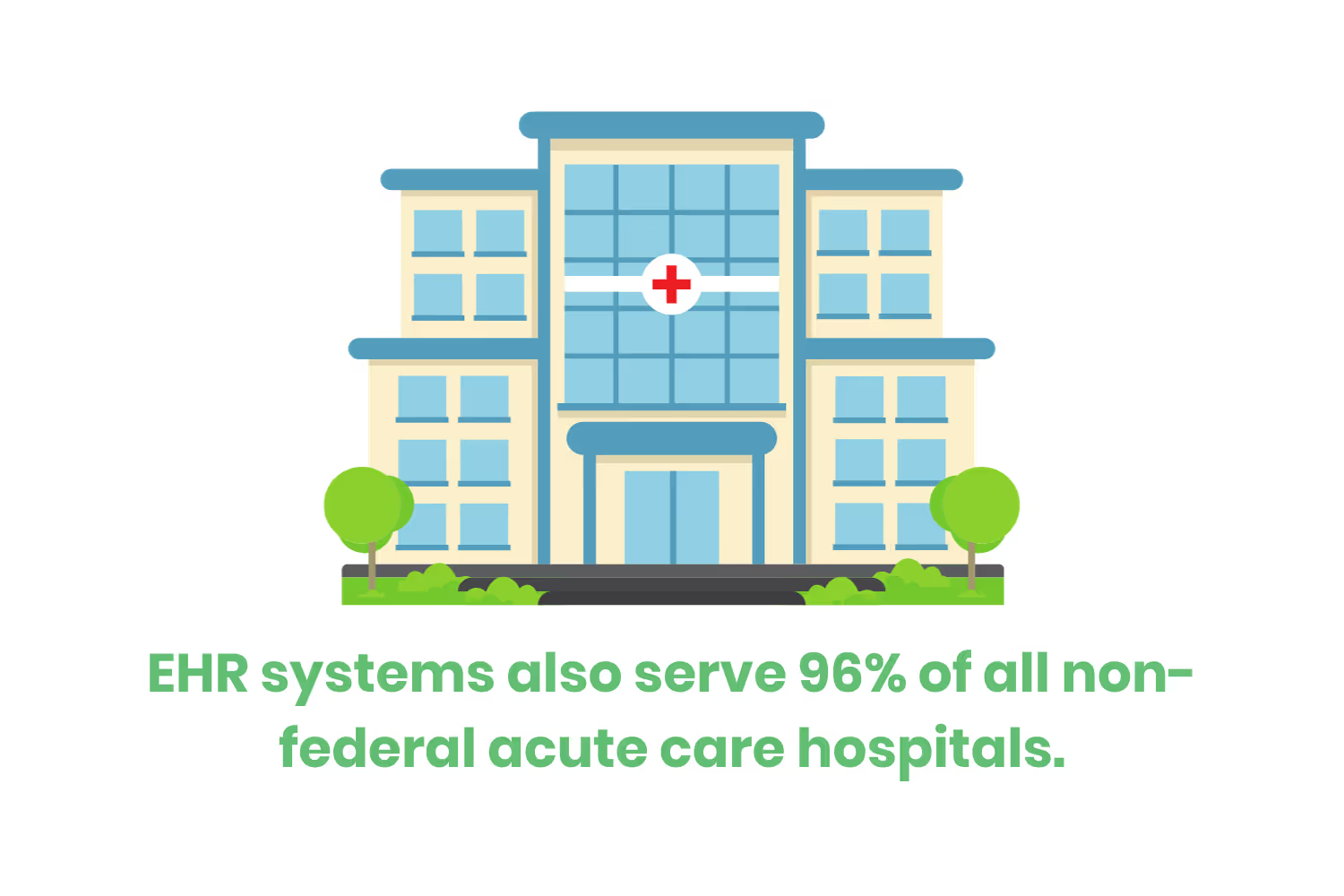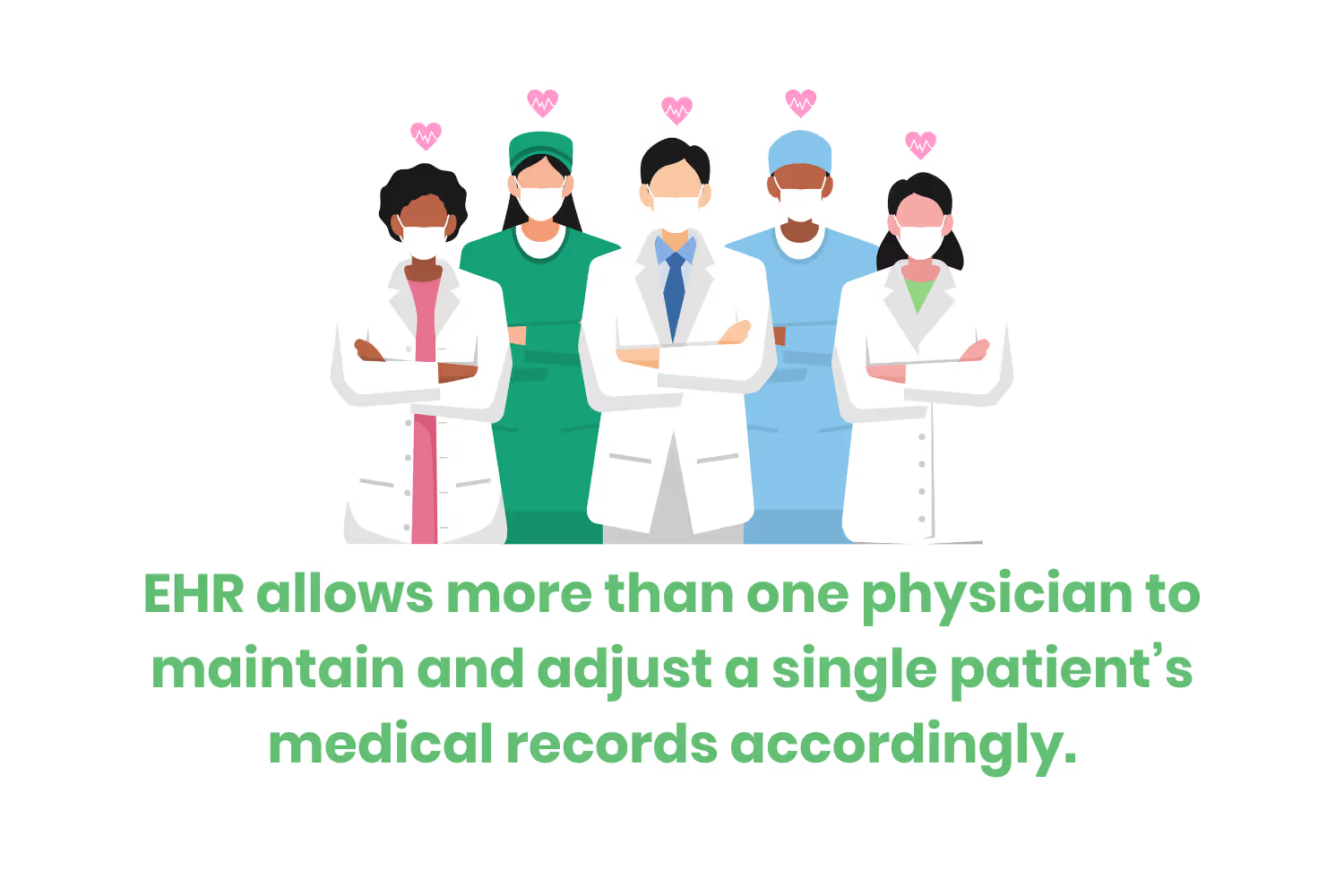[ANSWERED] What is The Difference Between an EMR and and EHR?
Let’s take a look at what exactly these medical systems are, their different components, and the benefits that come with them.

As of 2021, nearly 4 in 5 office physicians work through electronic health records (EHR). EHR systems also serve 96% of all non-federal acute care hospitals. To keep up with the growing needs of patients, healthcare providers across the country now operate through these systems.
This pillar in the healthcare industry is often used with electronic medical records (EMR). While both of these systems provide similar benefits, they are not the same. Both offer the option of a digital version of the once-traditional paper chart. They also both help to manage patients’ health outlooks. As well as provide a secure environment to transmit protected health information (PHI). So what’s the significance of knowing the difference between them?

It is imperative to understand both of these terms to employ the best strategy for your company. As well as to be able to provide the best support for your patients. So let’s take a look at what exactly these medical systems are, their different components, and the benefits that come with them.
The Difference Between EMR & EHR
As I said before, when talking about EMR and EHR, we are referring to processes that provide similar services. Namely, digitalizing PHI. Both are useful when taking diagnoses and treatment plans into account. They both allow physicians and patients to arrive at effective health plans faster. However, there are some pretty significant differences when it comes to these two services. Let’s go over them!
What are Electronic Medical Records (EMR)?
EMR has actually been around longer as a term than EHR. EMRs are digital versions of patient health information, charts, notes, and so on. A physician uses this data to help diagnose and treat their patients. All while keeping this information safe within the practice. That’s right, this technology is only useful for a single physician. If there is a need to send PHI to another physician or another practice, EMR technology is not equipped to handle this transfer.
Some examples of the clinical data found in electronic records might include:
- Demographics.
- Progress notes.
- Problems.
- Medications.
- Vital signs.
- Past medical history.
- Immunizations.
- Laboratory data and radiology reports.

EMRs allow healthcare organizations to hold significant advantages in their day-to-day practice. The service allows professionals to track data over time. It also allows for better identification of which patients require which services. Services might include wellness checks, or even preventative screenings, aiding in prevention efforts. Tracking data over time is another helpful tool in the EMR toolbelt. Being able to see differences in a patient’s blood pressure reading throughout time, for example, can help catch early signs of disease.
EMR monitors and improves the quality of care given within the practice, but what about communication between different practices?
What are electronic health records?
EHR shares similarities with EMR, but we already know that. This service also translates physical notes and data into a more convenient digital format. Just like EMR, this system contains information such as demographics, medications, vital signs, and so on. However, this PHI is available to multiple providers.
EHR allows more than one physician to maintain and adjust a single patient’s medical records accordingly. From billing information to lab results, if a specialist needs to view a patient’s history, EHR allows for easy access. Of course, there is still an emphasis on security when working with this sort of software. For a physician or another professional to gain access, just like EMR, they will need to go through identity verification.
So now that we know the difference between these two terms, let’s look at some of the benefits associated with them both.
Benefits of EMR/EHR
Both of these digitized collections of data are so important in today’s fast-paced world. For providers to be able to track data efficiently, as well as identify patients and their specific health needs correctly, the level of care can improve with no issue.
Streamlining a physician's workflow through this service by automating access to information is arguably the largest benefit. There are other care-related activities that can find support through this sort of digitized health record system, such as:
- Evidence-based decision support.
- Quality management.
- Outcomes reporting.
Better streamlined information between physicians and patients alike, the better the care will be. This brings us to our next important benefit associated with EMR and EHR. Improved patient care.

Improved Patient Care
As a health professional, your first priority should be the patient. You want to make sure you are able to meet each individual’s needs with efficiency and compassion. Continued progress towards a patient-centric practice comes inherently with easier access to data and better communication with the patient.
EMR and EHR both improve patient care by reducing instances of medical error. By improving the accuracy and clarity of medical records, especially those written by other physicians (EHR), you are less likely to deal with miscommunication.
In everyday life, miscommunication might not be the end of the world, but in healthcare, it can mean the difference between life and death. For example, messing up someone’s medications can cause a world of problems.
Making well-informed decisions is another benefit healthcare professionals gain when using this technology. Having real-time information available on a computer allows healthcare workers to have the most up-to-date information. With this information, they can offer more accurate diagnoses with more effective treatment plans.
Enhanced Communication and Coordination

As mentioned in the improved patient section briefly, this next benefit is huge for both professionals and patients alike. The opportunity for better communication in any scenario is always preferred. So why would it be any different in the healthcare field? Surprise, it’s not.
Healthcare professionals need quick and accurate communication to make the best decisions for their patients. EMR/EHR allows for better communication among healthcare providers both within an organization and between different organizations.
When healthcare team members are all on the same page, patients have a better chance of having better medical outcomes. Not to mention, this communication streamlines healthcare workers’ daily tasks, allowing physicians to see a larger number of patients.
Patient Engagement
The best way to create a treatment plan is by having the patient as a part of the decision-making. Empowering patients to participate in their healthcare journey is crucial, allowing them to access their own records (a requirement of HIPAA).
Patients who are better able to track their appointments and understand their treatment plans through the use of both services, contribute to better adherence to treatment plans. It also encourages patients to take a more proactive approach to their wellness.
Efficiency and Cost Savings
Although the patient is the most important factor in any healthcare setting, we can’t ignore the elephant in the room. In order to provide phenomenal service to these patients, your business needs to see a steady flow of revenue coming in the door. Without it, you won’t be able to help anyone.

Improved efficiency leads to cost savings through the following:
- Decreased paperwork.
- Improved safety.
- Reduced duplication of testing.
- Improved health.
Providers who are able to improve their work efficiency are more likely to meet business goals than those bogged down by menial tasks. A work-life balance is more than just a buzzword, it actually drives results.
Conclusion
The future of healthcare technology looks bright and exciting, with medtech such as AI on the horizon. While we continue to test the capabilities of EMR and EHR to provide more compelling services, keep in mind that we are nowhere near its full potential.
Continuing to upgrade both of these systems will benefit both patients and professionals greatly. Specifically, it will ease some of the stress put on healthcare workers as their workload becomes busier and busier. Through the development, deployment, and delivery of these services, physicians are able to meet the needs of their patients with more accuracy and understanding.
Emphasize your product's unique features or benefits to differentiate it from competitors
In nec dictum adipiscing pharetra enim etiam scelerisque dolor purus ipsum egestas cursus vulputate arcu egestas ut eu sed mollis consectetur mattis pharetra curabitur et maecenas in mattis fames consectetur ipsum quis risus mauris aliquam ornare nisl purus at ipsum nulla accumsan consectetur vestibulum suspendisse aliquam condimentum scelerisque lacinia pellentesque vestibulum condimentum turpis ligula pharetra dictum sapien facilisis sapien at sagittis et cursus congue.
- Pharetra curabitur et maecenas in mattis fames consectetur ipsum quis risus.
- Justo urna nisi auctor consequat consectetur dolor lectus blandit.
- Eget egestas volutpat lacinia vestibulum vitae mattis hendrerit.
- Ornare elit odio tellus orci bibendum dictum id sem congue enim amet diam.
Incorporate statistics or specific numbers to highlight the effectiveness or popularity of your offering
Convallis pellentesque ullamcorper sapien sed tristique fermentum proin amet quam tincidunt feugiat vitae neque quisque odio ut pellentesque ac mauris eget lectus. Pretium arcu turpis lacus sapien sit at eu sapien duis magna nunc nibh nam non ut nibh ultrices ultrices elementum egestas enim nisl sed cursus pellentesque sit dignissim enim euismod sit et convallis sed pelis viverra quam at nisl sit pharetra enim nisl nec vestibulum posuere in volutpat sed blandit neque risus.

Use time-sensitive language to encourage immediate action, such as "Limited Time Offer
Feugiat vitae neque quisque odio ut pellentesque ac mauris eget lectus. Pretium arcu turpis lacus sapien sit at eu sapien duis magna nunc nibh nam non ut nibh ultrices ultrices elementum egestas enim nisl sed cursus pellentesque sit dignissim enim euismod sit et convallis sed pelis viverra quam at nisl sit pharetra enim nisl nec vestibulum posuere in volutpat sed blandit neque risus.
- Pharetra curabitur et maecenas in mattis fames consectetur ipsum quis risus.
- Justo urna nisi auctor consequat consectetur dolor lectus blandit.
- Eget egestas volutpat lacinia vestibulum vitae mattis hendrerit.
- Ornare elit odio tellus orci bibendum dictum id sem congue enim amet diam.
Address customer pain points directly by showing how your product solves their problems
Feugiat vitae neque quisque odio ut pellentesque ac mauris eget lectus. Pretium arcu turpis lacus sapien sit at eu sapien duis magna nunc nibh nam non ut nibh ultrices ultrices elementum egestas enim nisl sed cursus pellentesque sit dignissim enim euismod sit et convallis sed pelis viverra quam at nisl sit pharetra enim nisl nec vestibulum posuere in volutpat sed blandit neque risus.
Vel etiam vel amet aenean eget in habitasse nunc duis tellus sem turpis risus aliquam ac volutpat tellus eu faucibus ullamcorper.
Tailor titles to your ideal customer segment using phrases like "Designed for Busy Professionals
Sed pretium id nibh id sit felis vitae volutpat volutpat adipiscing at sodales neque lectus mi phasellus commodo at elit suspendisse ornare faucibus lectus purus viverra in nec aliquet commodo et sed sed nisi tempor mi pellentesque arcu viverra pretium duis enim vulputate dignissim etiam ultrices vitae neque urna proin nibh diam turpis augue lacus.




